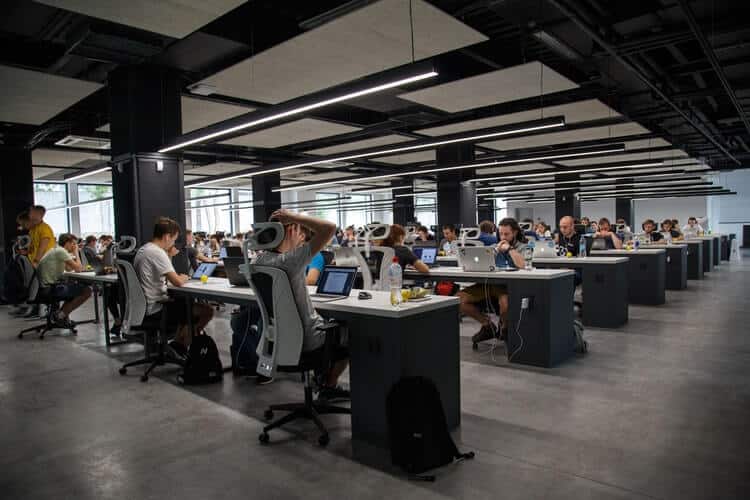VergeSense co-founder Dan Ryan tells us how sensor technology can help FMs in the ever-evolving world of smart buildings.
As smart buildings continue to revolutionize the workplace, there is a growing demand for FMs to keep up with these innovations and work towards increasing the efficiency and effectiveness of these spaces.
Dan Ryan, co-founder of VergeSense, is on the cutting edge of sensor technology for FMs and his company has developed pre-trained AI modules that use inexpensive hardware to passively track how a workplace is being utilized.
Could you tell us a little about your professional background and how the sensor technology behind VergeSense initially came together?
Dan: Before VergeSense, I had actually done another company in IoT and buildings called ByteLight. The idea was to use overhead LED lighting systems to find out the position of a user within a building and then help that user navigate where they wanted to go. We were initially focused on retail to help people find products in stores and move around in an in-store environment. That company was ultimately acquired by Acuity Brands and, in post-acquisition, we grew the business and I spent a couple years there.
I had always been really interested by all the work that’s happened in machine learning and artificial intelligence. In particular, the intersection between AI machine learning with smart buildings. What’s really become possible only recently is the ability to do extremely powerful processing on really inexpensive edge devices, cheap sensors you can deploy quickly. I teamed up with an old partner to start VergeSense and we’re based heavily around using machine and computer vision, but we’re doing all the processing on inexpensive hardware platforms.

How did you pinpoint facilities management as the initial target market for VergeSense?
Dan: People have been trying to broadly tackle this challenge of knowing where people and things are in a building and there’s two approaches: there’s an active approach and a passive-based approach, which is the approach we’re taking, where you have all these smart sensors on ceilings and walls and then when the sensors are trained, they can start gathering and capturing all that information.
Before this, it had been so difficult to actually capture enough data about what’s going in the building and facility environment that it wasn’t enough to empower a facility manager to really make good decisions. With the approach we’ve taken, we believe we can now gather all this data very efficiently and empower the facility manager and operator of the building to design a more efficient and effective building. The opportunity is enormous, but there hasn’t been a ton of people looking at the space yet.

How do you think VergeSense can specifically create cost savings for FMs who are facing a budget crunch?
Dan: We see a lot of near-term opportunity in tackling spatial optimization. By that I mean the ability to use really powerful yet simple sensors to capture data about exactly how people are using the entire building. With that, allowing the FM to more optimally design and manage all that space. Identifying meeting rooms that aren’t being used, areas of the facility that are empty and not actually being used by people and repurposing those spaces for new functions, even allowing the FM to reduce the overall footprint of their real estate portfolio and save on real estate and associated maintenance costs.
In addition to that, there are applications that start to intersect with traditional HVAC and lighting control. A popular one that is starting to emerge right now is modulating HVAC heating and cooling using exact people counts, there’s been a bunch of research around this, and if you can get the exact count of the number of people in a room, you can actually cut your heating and cooling costs by upwards of 30 percent a year by controlling the airflow in a more granular way.

With regard to introducing sensor technology into an existing work culture, what is your approach to that?
Dan: We usually start off with a small-scale installation, we want to try it out before going into full production. With respect to questions around privacy and anonymity, one of the nice things about our sensors is that we do all of the processing on the devices themselves, so we’re not streaming any raw data off the devices. Our sensors are completely anonymous. The only data we get is people count and we don’t tie it to someone’s phone and there’s no mobile app integration. This passive approach to sensors does tend to align pretty nicely with best practices from a privacy perspective.
With the rise of sensor technology and with respect to things like hoteling and hot desking, what do you think the future of the workplace will look like in the coming years?
Dan: Clearly the trend is towards more collaborative workplace environments, hoteling and hot desking are very common and a lot of remote work where people don’t necessarily go into the office everyday. Those are certainly trends I think you’ll continue to see.
The broader trend is workplaces are becoming incredibly dynamic environments. In the past, the workplace was pretty static, people had dedicated desks and offices and come to work five days a week from from nine to five. That’s certainly shifting in a fundamental way. Ultimately in a way that’s going to be good for everybody, it allows employees a lot more choice and flexibility in how they work and it allows companies to have more productive working environments and be more efficient in how they’re actually managing and utilizing their space.
Find out more about VergeSense by visiting their website.
How do you think sensor technology will shape the future of the FM industry? Tell us your thoughts in the comment section below.
Photos: Austin Li, Mia Baker, Alex Kotliarskyi





